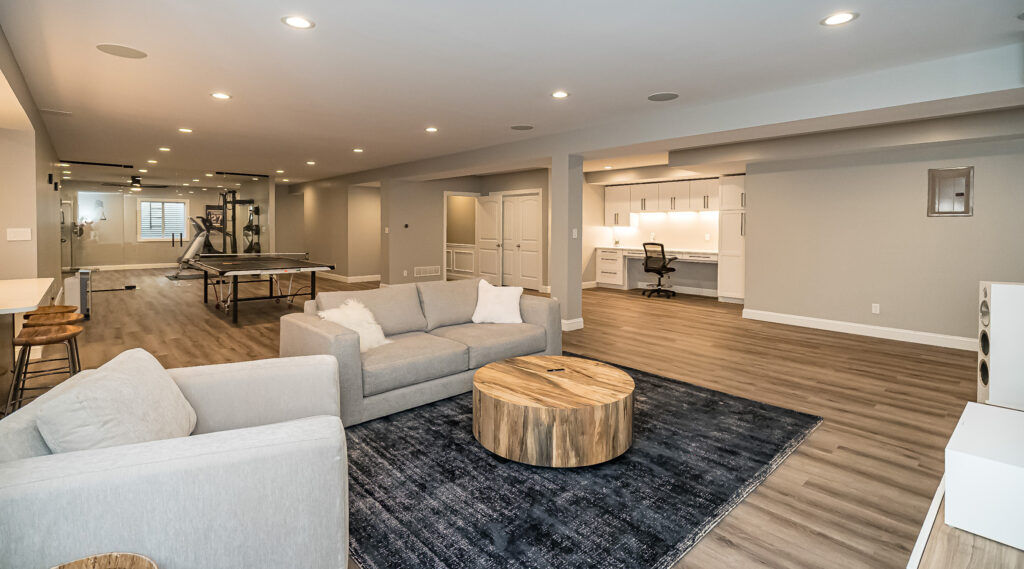Whether you dream of a cozy retreat, a home gym, or an entertainment haven, a basement renovation offers endless possibilities. But before you can pick out furniture and decor, the foundation of any successful project lies in careful planning and thorough preparation. Renovating a basement comes with unique challenges, from moisture control to lighting constraints, so it’s crucial to approach the process methodically. In this guide, we’ll walk you through essential steps to help you plan and prepare for a basement transformation that’s both practical and inspired.
Step 1: Evaluate The Current State
Before getting into design ideas, it is essential to assess the current state of your basement. Look for moisture exposure, structural issues, or other shortcomings that could complicate the renovation. Items to check off your list are cracks in the foundation, water damage signs, or mold. All of these need to be tackled first before any work is started so that you can avoid more expensive repairs later. If you are uncertain about how bad or good your basement condition is, this would be the best time to call in basement renovation contractors, as they will go a long way in advising what needs attention. They will look at things that might be a problem and recommend solutions, which means your renovation goes off on the right foot.
Step 2: Decide Your Purpose
After inspecting the condition of your basement, it’s time to choose what you want it to be. You can turn the basement into a family room, a home theater, a guest bedroom, or space for new exercise equipment. How you plan to use your basement impacts everything from its lighting and flooring to layout and furniture. Top priorities should include how your family will utilize the space most conveniently and what features create more value for your property. It is vital to have this direction to focus on the elements that matter most.
Step 3: Set a Budget
Your budget will define what you can do to improve the appeal of a basement and how much material you could buy for it. On top of that, it is crucial to include a buffer for any unknown costs that can come up during construction. With the aid of your basement renovation contractors, determine the cost of materials and labor to determine how much everything costs so you can make a realistic budget. Besides, tack on an extra 10-15% of your budget when setting aside funds for cleaning fees, plumbing, or electrical upgrades.
Step 4: Plan Your Layout
Now that you know how much money you have, it’s time to create your basement blueprints. Ensure you find the best position for walls and windows to be placed where it factors in energy and natural light. Leave adequate space for all your activities while making the area functional and comfortable. Visualize different layout possibilities with online tools or software of work alongside qualified contractors. They offer floor plan designs, a perfect way to create some designs and see how you may like your space in the future.
Step 5: Moisture Control
Basements are generally just humid, warm areas, allowing mildew to emerge. Moisture should also be addressed before starting your renovation to prevent these problems. Get basement renovation companies to install a new vapor barrier and better ventilation, or even add a sump pump to help keep water away. Purchase an excellent dehumidifier to help control the humidity levels in your basement. This keeps the moisture out during and post-renovation and will be used periodically for a dry and comfortable space.
Step 6: Select The Perfect Floor Covering
Your options regarding basement flooring may vary depending on whether it’s made for living or used for other purposes. The most popular basement flooring choices are vinyl, laminate, carpet, and tile. Each has advantages and disadvantages, so consider durability, comfort, or ease of maintenance. Use vinyl or tile flooring for moisture-prone areas, as both are moisture-resistant. These materials can protect the space from getting damaged due to water over time.
Step 7: Planning Heating and Insulation
Basements tend to be quite cold, and heating and insulation are necessary. Depending on your climate, insulate the walls, floors, and ceiling. Consider the following heating options: home HVAC system expansion or space heaters. Insulation is beneficial in maintaining the temperature and offers soundproofing, especially when creating a home theater or entertainment room. Higher-quality insulation done by top basement renovation companies will keep your space warmer and more insulated from outdoor noise.
Step 9: Get Permits and Hire Contractors
If your renovation is significant, you’ll need permits before construction starts. Electrical, plumbing, and structural modifications may require permits from local building authorities. Proper permits can avoid fines or other issues when selling your home. For tasks like wiring or plumbing, hiring a professional is not only safer but can save you time in the end. Check the references and credentials of workers before hiring them for services.
Conclusion
A basement renovation is valuable because it transforms unused space into your home’s largest and possibly most fabulous room. Follow these steps above to ensure your renovation plans are clear, giving you confidence about the outcome. Take the planning stage slowly, as it’s better to handle issues upfront than to face surprises when work begins. You will ultimately create a livable space for your family to enjoy for years. Good luck with your renovation!


